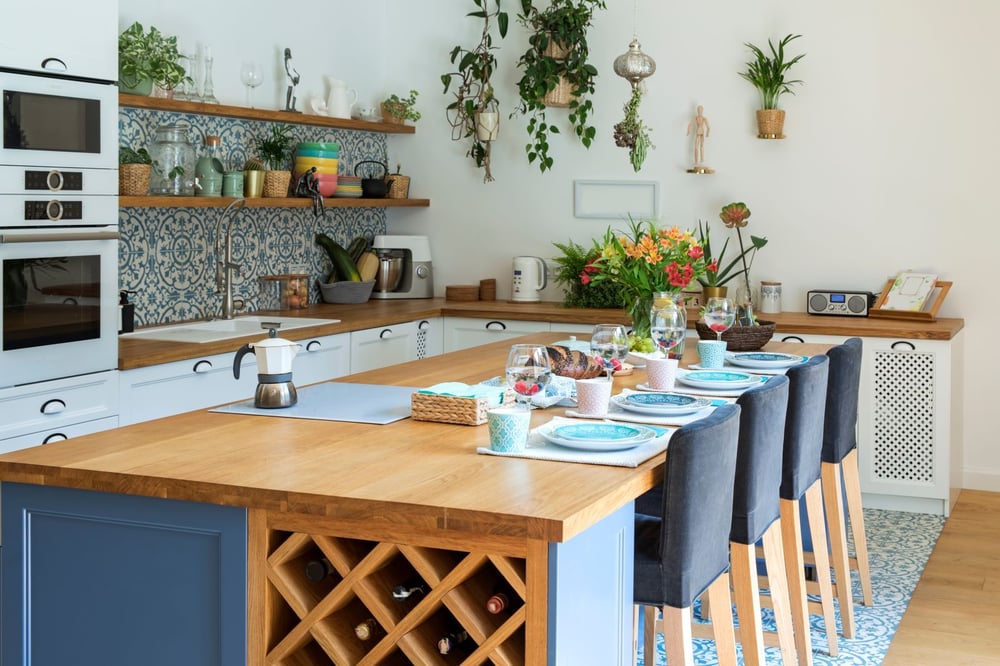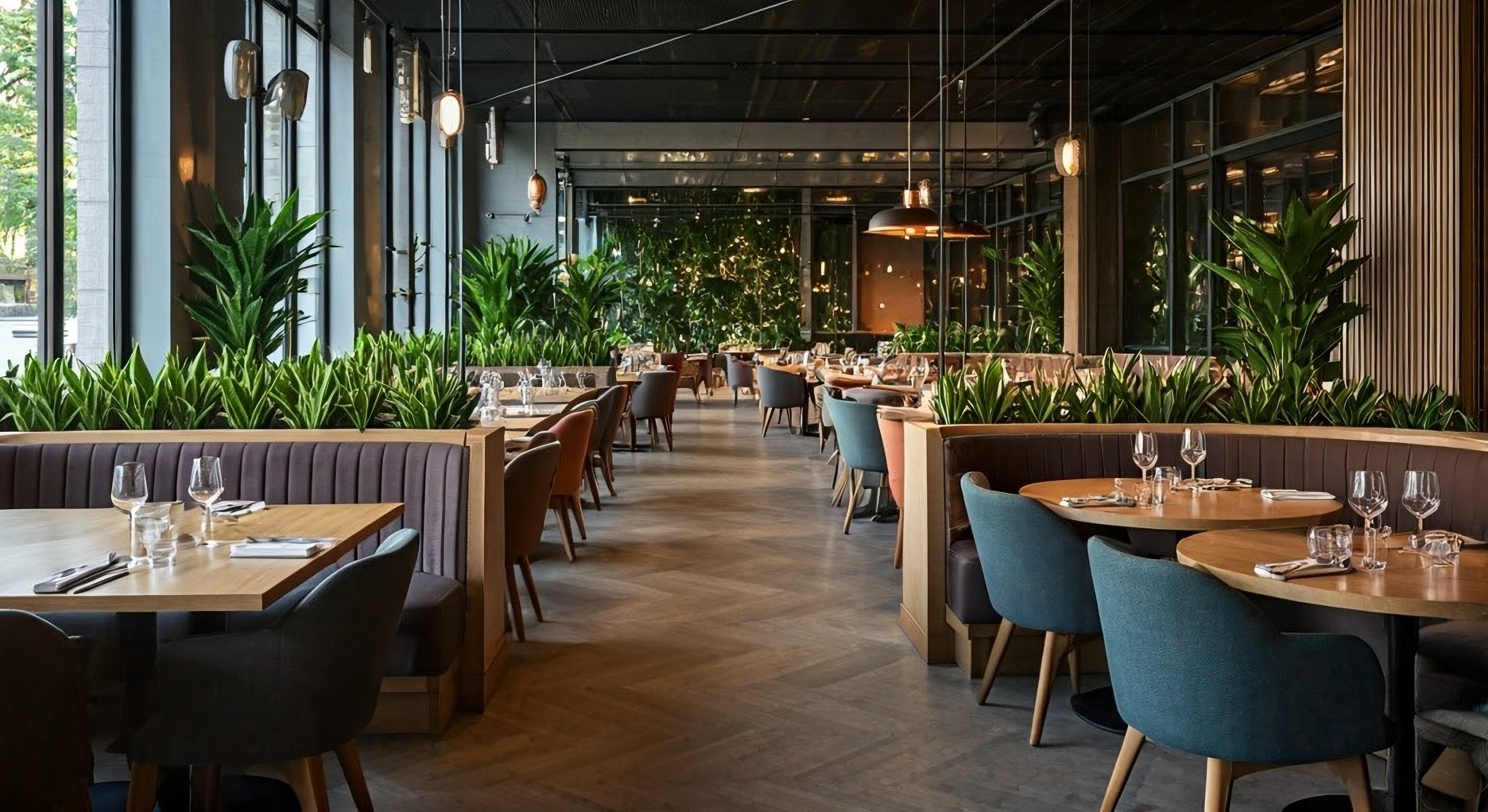Spanish Kitchen Design Styles
The kitchen is the heart of every home. It beats to the rhythm of the individuals and families that live there, working as so much more than simply a place to prepare meals. It is often also a space to gather, to connect and to share the moments that make coming together so important. As a result, there is lots to consider when making design choices on what particular styles and trends to follow.

Viva Espana
The design language of Spanish kitchens is built on the idea of Spanish Colonial Revival architecture that became popular in the early twentieth century. They prioritise warmth and texture with Mediterranean sun-dyed colours and ample spaces that work in decorative layers, using hundreds of years of Iberian and Moorish influence to tie the act of cooking and serving into the very fabric of the house. All of which is, of course, an entirely different prospect to the clinical and precise, polished steel kitchens that have become so prevalent in the last two decades.
Spanish Kitchens are a wonderfully versatile design trend that can be applied in part or whole to any home when carried out correctly with planning, commitment and understanding. In this guide we work through a collection of defining features and the steps one must take to achieve them.
A Mediterranean Colour Palette
Collecting a group of the right colours to work with should be the foundation of your Spanish Kitchen strategy. This should never feel overly coordinated, more of an instinctive choice built around one dominant earthy hue. Terracotta, saffron and paprika reds and oranges will provide a solid base with olive and bottle green providing an engaging and interesting accompaniment. If you are looking for a slightly more modern interpretation, then a deep indigo is also a great way to begin. Using hand rubbed limewash whites as a tactile neutral will always allow for some space to breathe within the colour scheme too.
Hand-Painted Tiles & Saltillo Flooring
Getting the patterned ceramics right goes a long way to achieving the perfect Spanish Kitchen look. Saltillo floor tiles deliver a warmth and structure underfoot that will anchor the whole room. Tiling these up to a decorative panel or surrounding a kitchen plinth sets the tone in a muted way, with the option to add in Moorish star patterns or subtle checks as an occasional accent. Do remember that function is as important as style here, so use dense clays and resilient glazes in areas that will be hardworking, such as splashbacks and around sink areas. These tiles are a chance to inject your own personality across the space in a structured way, so choose tile designs that bring you joy.
Arches & Curves
Employing instantly recognisable Spanish architectural forms within the kitchen space can have a huge impact. The curvilinear shapes of gentle arches above doorways and built-in niches for cooking will relax the geometry of a room to soften light and ease harsh lines. It may be difficult to impose these shapes within existing built environments, but kitchen furniture and accessories can help achieve this effect in simpler ways. Rounded countertop edges and curved canopies over hobs provide an instant focus and will also frame these zones in a subtle way, aiding the movement and circulation around the room.
Work on The Walls
The use of texture on the walls of a Spanish-style kitchen is perhaps the biggest design influence of them all. Using plaster and stucco creates a matte skin that forms an unmistakable relationship with daylight for an inviting and tactile atmosphere. Adding limewash as a preferred finish delivers a tonal movement across the room that is difficult for paint to achieve and allows for imperfections to become a feature and not a mistake. Using trowelled microcement ensures that you can still carry this theme across backsplash areas with the benefit of being wiped clean and therefore hygienic at all times.
Exposed Timber
Like so many of the design languages that draw from pre-modernity, there is an element of Spanish Kitchen style that makes features out of functions. The timber frames and beams that are gracefully aged and proudly exposed are a classic element here and if it is possible in your kitchen space, then must be utilised. Highlighting the grain with clear oils and avoiding harsh varnishes allows for a smooth and natural look without becoming glossy and too manufactured. If this is not possible, then introducing cabinet doors of oak, chestnut or even reclaimed pine will work wonders for a similarly honest and hardworking feel. Smaller and lighter touches of breadboards, plate racks and peg rails in the same material are good accents to manage too.
Making Metal Work
The delicate grounding of hand-painted tiles and linear flooring should be paired with examples of visible metalwork to aid the idea of a kitchen as a functional space. Patinated bronze and burnished brass are excellent design choices for taps and sink hardware in soft sheen finishes. These will add to the aged and used look that Spanish kitchens are renowned for. Don’t hesitate to intentionally mix the metals using iron for structure, copper for embellishments and bronze for additional touchpoints across the room for the full effect. For the ultimate application of this theme, you could commission a blacksmith to create wrought iron chandeliers and lanterns to house lighting in bespoke pieces.
Shelves on Show
Creating open shelving with bold and eye-catching timber on iron brackets encourages more thought on the utensils and crockery that will live in the kitchen. Having these on show tells the story of the people who live and work within the space and can be curated accordingly. Earthenware, Talavera plates and hand-thrown jugs offer interesting silhouettes against the crafted walls with hues of terracotta, cream, olive and indigo adding splashes of subtle colour. The maintenance of open shelving is perhaps a little more difficult than ordinary cabinets, so introducing bespoke glazing may be a good compromise if required.
Spanish kitchens convey the duality of a space that is lived-in and loved. The associated design styles and influences encourage the heart of a home to be at the centre of all lifestyles without any grand fuss or statements. This is the fundamental core of Mediterranean living at its finest and when coupled with purposeful design and dressing, it creates an impressive environment perfect for family living.



